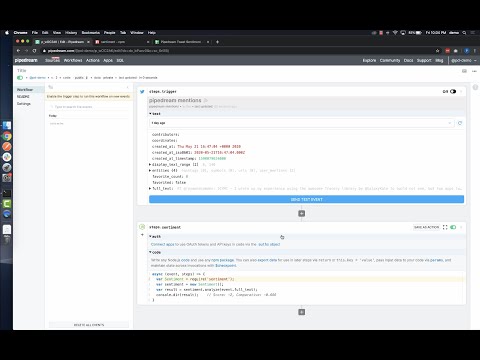What do you want to automate
with Google Sheets and PandaDoc?
Prompt, edit and deploy AI agents that connect to Google Sheets, PandaDoc and 3,000+ other apps in seconds.
Trusted by 1,000,000+ developers from startups to Fortune 500 companies
Popular Ways to Connect Google Sheets with PandaDoc#
Popular Google Sheets and PandaDoc Triggers#
Emit new event when a document failed to be created. See the documentation here
Emit new event when a document is deleted. See the documentation here
Emit new event when a document's state is changed. See the documentation here
Emit new event when a document is updated. See the documentation here
Emit new event when a recipient completes a document. See the documentation here
Popular Google Sheets and PandaDoc Actions#
Add a single row of data to Google Sheets. See the documentation
Adds an attachment to a document. See the documentation here
Add multiple rows of data to a Google Sheet. See the documentation
Create a document from a file or public file URL. See the documentation here
Get all values or values from a range of cells using A1 notation. See the documentation
Overview of Google Sheets#
The Google Sheets API allows for the creation, reading, updating, and deletion of data within Google Sheets, enabling a robust platform for spreadsheet management and data manipulation. Through Pipedream, you can craft serverless workflows that respond to various triggers, such as webhook events, emails, or scheduled times, to interact with Google Sheets. This synergy can automate reporting, synchronize data across applications, manage inventory, track leads in a CRM, or even conduct survey analysis by updating and retrieving sheet data on the fly.
Connect Google Sheets#
import { axios } from "@pipedream/platform"
export default defineComponent({
props: {
google_sheets: {
type: "app",
app: "google_sheets",
}
},
async run({steps, $}) {
return await axios($, {
url: `https://www.googleapis.com/oauth2/v1/userinfo`,
headers: {
Authorization: `Bearer ${this.google_sheets.$auth.oauth_access_token}`,
},
})
},
})
Overview of PandaDoc#
The PandaDoc API opens up a realm of possibilities for automating document workflows, creating a seamless bridge between document management and various business processes. With it, you can programmatically create, send, and track documents, streamline electronic signatures, and manage templates, among others. Integrations through Pipedream can harness these capabilities, enabling you to trigger actions in PandaDoc based on events from other apps, or vice versa.
Connect PandaDoc#
import { axios } from "@pipedream/platform"
export default defineComponent({
props: {
pandadoc: {
type: "app",
app: "pandadoc",
}
},
async run({steps, $}) {
return await axios($, {
url: `https://api.pandadoc.com/public/v1/members/current/`,
headers: {
Authorization: `Bearer ${this.pandadoc.$auth.oauth_access_token}`,
},
})
},
})
Related Videos#



Community Posts#


